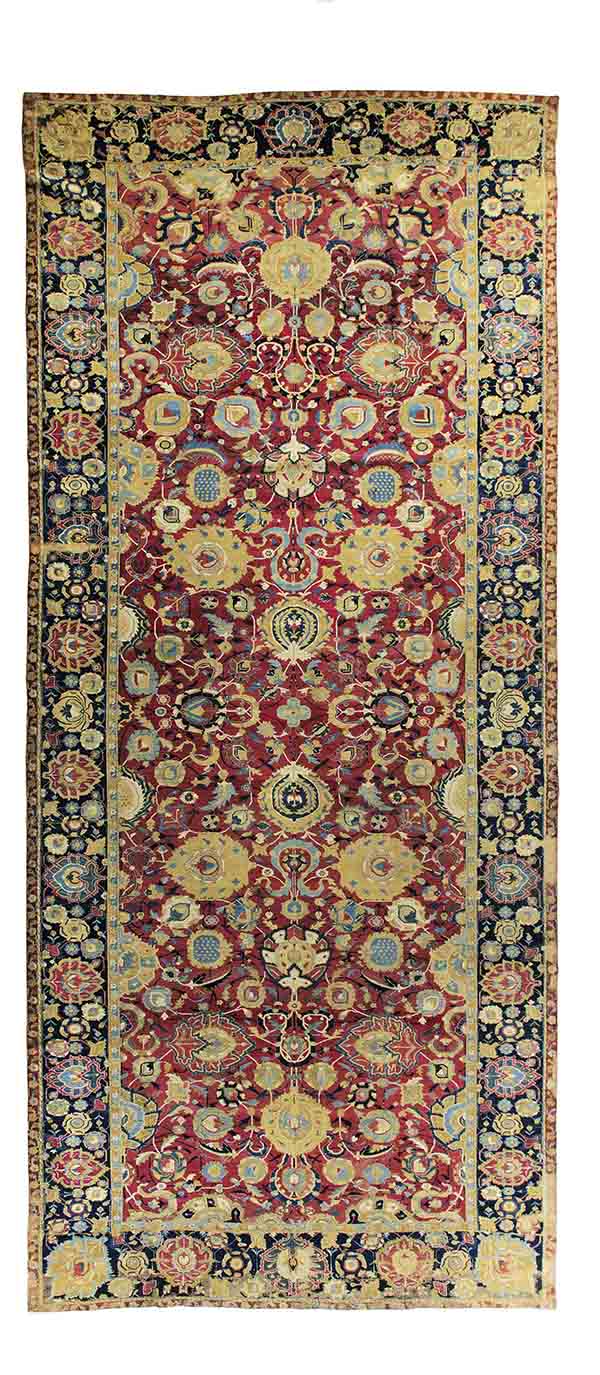Classical Carpets from the William A. Clark Collection at Sotheby’s, New York, 5 June 2013
Potentially the greatest carpet auction in living memory, 25 classical 16th and 17th century carpets from the collection of the ‘Copper King’, William A. Clark, are being sold at Sotheby’s in New York on 5 June 2013 by the Corcoran Gallery of Art in Washington DC to benefit future acquisitions.

The Clark Sickle Leaf Vase Carpet, Kerman, southeast Persia, 16th century. Wool pile, asymmetrically knotted, open left, cotton warps, 3 weft shoots (1st and 3rd wool, middle silk); 1.95 × 2.65m (6’5″ × 8’8″). To be sold at Sotheby’s New York, 5 June 2103, by the Corcoran Gallery of Art in Washington DC. Estimate $5,000,000–7,000,000
Senator William A. Clark (1839-1929) was a colourful character of dubious reputation who, after a roller-coaster career in mining, banking and other industries, made a great fortune as one of the ‘Copper Kings’ of Montana, and then managed to get himself elected (briefly) to the US Senate. One of the richest Americans of his generation, Clark was a major buyer of art and antiques on the New York art market, and of oriental carpets from Vitall Benguiat in particular. Clark died at the age of 86 in New York City, and his collection of art and fine furnishings, including many large Persian carpets from his mansion on Fifth Avenue was bequeathed to the Corcoran Gallery (see HALI 127, p.41), where since the 1948 exhibition ‘Carpets for the Great Shah’, they have for the most part remained in storage.
The deacquisition process, which began with some success with a group of Safavid red-ground Esfahan carpets at Christie’s in New York in November 2009, has now moved across town to Sotheby’s. The consignment includes Senator Clark’s incomparable sickle-leaf ‘vase technique’ Kerman carpet (estimate $5-8 million, featured in HALI 175, pp.48-49) and the 44-foot long Laföes red-ground Esfahan carpet with sickle leaf borders (estimate $800,000-1.2 million). Once the property of Duke Don Gaetano de Braganza (1856–1927), it was acquired by Clark from Benguiat.

The Laföes red-ground Esfahan carpet with sickle leaf borders, Central Persia, 17th century, Sotheby’s New York, 5 June 2013, estimate $800,000-1.2 million
Other highlights include a round Ottoman Cairene carpet (estimate $80-120,000) once in the collection of Duke Sforza in Milan, as well as three silk ‘Polonaise’ rugs and a pristine mid-17th century Esfahan, the last once owned by the American financier, philanthropist and collector Henry G. Marquand (estimate $150-200,000), which was purchased by Clark at auction in 1903.

The Sforza Cairene Ottoman round carpet, 16th century. Sotheby’s New York, 5 June 2013, estimate $80-120,000

The Marquand red-ground Esfahan carpet, Central Persia, mid-17th century. Sotheby’s New York, 5 June 2013, estimate $150,000-2000,000














